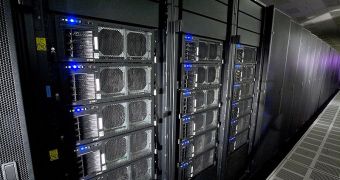On May 25, 2008, Roadrunner, a supercomputer built by IBM at the Los Alamos National Laboratory in New Mexico, USA, was the world's first system that managed a sustained performance of 1 petaflop in the TOP500 Linpack benchmark. Despite that, however, the supercomputer worked in the background, contributing much to the advancement of science and technology without most people knowing about it.
Now, after just five years, the Roadrunner is getting dismantled. It was decommissioned by Los Alamos on March 31, 2013, in favor of the Cielo, a smaller supercomputer made of more energy-efficient parts, and which costs just $54 million / 42 million Euro instead of $121 million / 94 million Euro.
“Roadrunner got everyone thinking in new ways about how to build and use a supercomputer,” said Gary Grider, an official at the Los Alamos National Laboratory.
“Specialized processors are being included in new ways on new systems and being used in novel ways. Our demonstration of Roadrunner caused everyone to pay attention.”
Roadrunner was made out of 278 racks, each the size of a refrigerator, and helped researchers understand energy flow, viruses and other scientific mysteries.
It seldom cropped up in the news though, and with the Top 500 list always finding some other supercomputer to praise, the Roadrunner was largely forgotten.
Nevertheless, even if its departure from the technology industry will happen with just as little fanfare, it can still perform one final service.
Researchers will experiment with it to better understand the techniques used by Roadrunner's OS to compress memory.
"These are things we never could try while Roadrunner was running production problems," Mr. Grider said. "Even in death, we are trying to learn from Roadrunner."
Right now, Titan is the most powerful supercomputer in the world, made with AMD processors and NVIDIA GPU computing cards.

 14 DAY TRIAL //
14 DAY TRIAL //